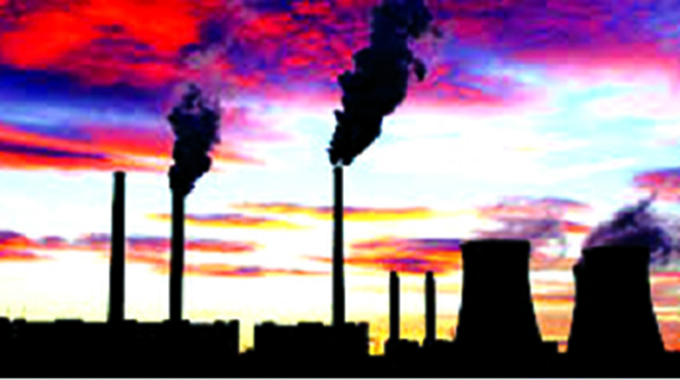EDITORIAL COMMENT: We can cope with climate change if we apply science

Global warming produces two sets of additional problems for Zimbabwe besides the general higher temperatures: A greater probability of drought each season and a higher probability of more cyclones sweeping in from the Indian Ocean.
A lot of our droughts are generated by the weather patterns associated with El Nino events in the Pacific Ocean where the pile-up of warmer water in the west of the central Pacific sloshes back and creates wind patterns that bring more rain to some parts of the world, and less rain to other parts of the world, such as Southern Africa.
In addition, the trend towards later starts to our rainy seasons has been linked by some to global warming, but in any case even in good years we now see the rains start later than our parents remember, and that presents its own problems.
Tropical cyclones, tropical storms and tropical depressions will become more frequent as the world becomes warmer.
This pick up their energy from the sea, and the warmer the sea they pass over the more energy they will acquire and the more water they will be able to absorb.
More energy means higher winds, and more water sucked up means more rain must fall when that water is released. The warmer seas also means more modest depressions can build up into cyclones.
The upshot is that we will see more cyclones each season, that these will, on average, tend to be more damaging and that they will bring more rain.
We have already seen one tropical depression enter Zimbabwe this cyclone season in the south-west Indian Ocean and we can expect around another six to cross our borders.
While the Meteorological Services Department can predict from the averages and other factors how many we are likely to see in a season, it cannot predict their intensity or how much rain they will bring.
Some of those that arise over the ocean will miss Zimbabwe, as Cyclone Batsirai did last week. There are more than seven depressions to cyclones each season, but our statistics show fewer because some do not get as far as Zimbabwe.
Those counting should consider that Cyclone Idai was the ninth of its season.
This greater risk of cyclones means we need to be able to monitor progress of a cyclone and be able to make better predictions of how much rain it may dump on Zimbabwe and how strong the winds might be.
While satellite imagery can do a great deal to allow the Met Department to know where and when one arises and monitor its course, other equipment is needed to measure these other properties.
This is now already in the country or, in the case of the weather radars, on the way as efforts are made both by the Government and development partners to make sure our weather experts have what they need.
As Ministry of Local Government and Public Works, July Moyo, noted this week when accepting the first batches of the new equipment, if we have the right warnings and we have put in place the right plans we might have cyclone damage but not cyclone deaths.
This does not seem an unreasonable goal.
The main need is to get the warnings to the right areas on time and to have the necessary support and planning in place. One problem has been knowing what level of alert to give.
After Cyclone Idai we drew up sets of plans.
The fairly low energy tropical storm and depressions seen since then have not needed evacuation, although precautions were taken and the alert system at least managed to get to everyone in the affected areas, usually along the Eastern Highlands, that they needed to be careful, and they were.
We lost roof sheets and saw other damage, but at least did not have anyone killed.
The other policy that we need to press ahead with as we look towards more drought and more cyclones is to have more dams.
If an ever increasing percentage of our annual rainfall is going to come with cyclones, storms and depressions, we will see more rain in fewer days, so we need to store what does come.
The Second Republic has already upgraded our dam construction programme and now needs to take it to further levels.
The water engineers have worked on these models for some time.
When Lake Mutirikwi was built some decades ago the designer came in for a lot of ridicule over the next few years as the dam never filled for some time.
Then one of these major cyclones turned up over the Lowveld and the dam filled rapidly and he was vindicated. He had designed to catch the Lowveld cyclonic rainfall and keep it stored for several years.
The same attitude and planning must now be put in place for other good dam sites.
This means we can use the cyclones to help ameliorate the other unpleasant side-effect of climate change, the droughts, and even be able to give more farmers access to supplementary irrigation at the start of a season to get crops established before the main rains fall.
In other words applied science can help us avoid some of the worst of the effects of climate change by being better able to predict what is going to come and monitor what is actually happening and some engineering can help us use one set of effects to beat back another set.









Comments